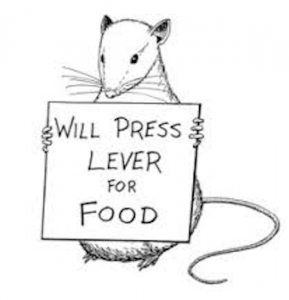Related Articles
Key Terms:
Conditioning: a behavioural process whereby a response becomes more frequent or more predicable in a given environment or situation as a result of reinforcement – being a stimulus or reward for desired behaviour
Operant conditioning: changing behaviour by the use of reinforcement which is usually given following a desired response
Reinforcement: The reward for engaging in specific behaviour(s). This can also provide future motivation for engaging in repeated behaviour
Extinction: the disappearance of a previously learned behaviour when the behaviour is no longer reinforced through a stimulus or reward
The appeal and draw of the gamble
Wagering on sporting events follows the structure of a variable-ratio (VR) schedule of ‘partial reinforcement’, which becomes embedded through what is called; ‘instrumental conditioning’. In layman terms, this type of reinforcement follows a schedule wherein a reinforcer (the act of winning) is provided following a pre-determined average number of responses (theoretical loss). For example, the reinforcement schedule could deliver the reinforcer (winning a bet) after the 2nd, 4th or 10th action. Interestingly, reinforcers delivered on the 5th schedule have been shown to be the most effective when maintaining or attempting to sustain future behaviours. In many respects, it is this sense of unpredictability that ignites and preserves the humanistic tendency to venture towards undertaking risky behaviours.
How do we know? Historical research on rats and pigeons and ecological validity
B.F. Skinner’s approach (1979), cited in Toates (2014) to reinforcement was underpinned by the theory of ‘operant conditioning’. Using ‘the Skinner box’ (see figure 1), Skinner observed rats and pigeons learning to manipulate their environment by pressing a lever or pecking a key, in order to receive a food reward for what was the ‘desired’ behaviour – utilising the techniques of ‘positive reinforcement’.
Figure 1: the skinner box:
- The rat is placed in the box
- Behaviour is shaped in order that the subject gets closer to the bar pad to receive food
- Eventually the subject learns that by pressing the bar they will receive a food reward
- Food becomes the reinforcer for behaviour
Applying ‘extinction’, involved the removal of the reinforcer (food), which initially increased the key/lever pressing before the behaviour declined (see figure 2). In relation to betting, this could explain why people who have just lost a wager immediately engage in the act of gambling again in a sometimes frantic and uncomposed attempt to win their money back.
Figure 2: a visual representation of behaviour change after a stimulus or reward has been withdrawn
Although such an experiment would be highly unethical to subject humans to the conditions of a Skinner box, behaviourist techniques have high ecological validity when applied to gambling research. For example, like the conditioning techniques used on the rats and pigeons in Skinners original research, humans have also been shown to stay consistent whilst gambling long after the reward and thus reinforcement of winning has ceased.
Can all people be effectively conditioned or are some more susceptible or resilient?
A decisive question that arises is whether individual differences in conditionability can help explain why some individuals develop gambling problems and others don’t. Individuals who easily learn associations between previously neutral stimuli and positive stimuli may be more likely to develop gambling problems than others. Also, individuals who have difficulties learning associations between previously neutral stimuli and negative stimuli may be more likely to develop gambling problems because they fail to associate gambling with the negative feelings associated with losing.
Individual Vs Bookmaker strategies for safeguarding problematic behaviour
Bookmaker ‘limit’ setting is extremely unpopular with professional gamblers and syndicates and doesn’t appear to safeguard high intensity (high-risk) players. So what works for both sides? Emphasis could instead be placed on offering game management tools that assist players in decisions about how much they want to spend gambling. Such management tools could also give players information and analysis about their actual gambling behaviour and advise them based on their personal gambling patterns. Research conducted by Auer, M. & Griffiths, M.D. (2013) has revealed that, ‘voluntary’ limit setting had a positive and statistically significant effect on high intensity gamblers as opposed to mandatory limit setting. More specifically, the analysis showed that (in general) gaming intense players specifically changed their behaviour after they limited themselves with respect to both time and money spent. Strategies for effectively modifying behaviour:
- Setting voluntary limits before commencing gambling
- Setting mandatory limits if behaviour becomes a problem
- Online gambling providers sending appropriate player management messages onscreen
Conclusion
The VR schedule of reinforcement which underpins gambling can sometimes result in behaviours that can become deep routed or in psychological terms; ‘hard to extinguish’. This is why a high intensity individual placing the wager may continue to return and enter back into the cycle of sustained gambling behaviour long after the reward(s) have been collected. An effective 3-point strategy that has been shown to safeguard against high intensity players’ behaviour is for bookmakers to enable players to set voluntary rather than mandatory limits, whilst also sending appropriate feedback messages to inhibit extended gambling sessions.


